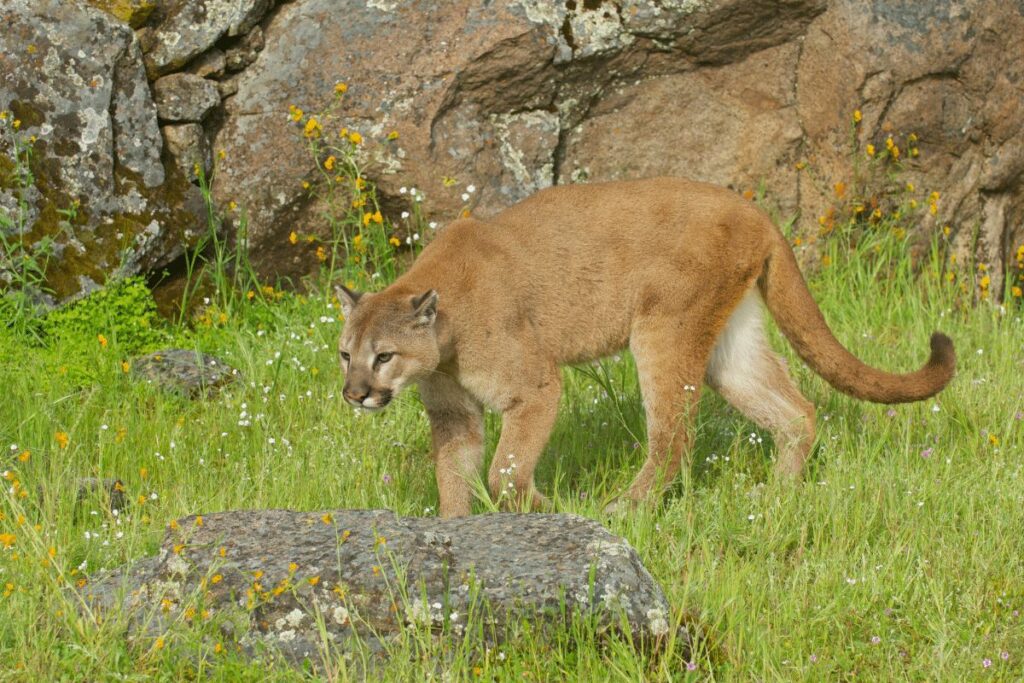Spot top 10 animals in Dixie National Forest. Hiking guide with photos & wildlife hotspots.
Hey, wildlife enthusiasts! Ready to play ‘I spy’ with the wild residents of Dixie National Forest?
This isn’t just a walk in the park; it’s a front-row seat to nature’s hidden concert. Imagine spotting the stealthy cougar or hearing the gobble of a wild turkey.
We’ve trekked and tracked to bring you the top 10 animals you can spot in Dixie, from antelope sprinting across the plains to prairie dogs popping up like whack-a-moles.
Grab your binoculars, because you’re about to witness everything from elk parades to eagle flybys. Plus, we’ve got the hotspots where these critters love to hang out.
Ready for a game of wildlife bingo? Dixie National Forest is your board, and we’re here to help you tick off every square.
Overview of Dixie National Forest
Dixie National Forest, located in southern Utah, is a sprawling expanse of natural beauty that covers approximately 2 million acres. Known for its diverse landscapes and abundant Dixie national forest wildlife, this national treasure attracts visitors from all over the world.
Size and Location
The vast Dixie National Forest spans across 170 miles, encompassing parts of Garfield, Iron, Kane, and Washington counties.
It stretches from the Great Basin Desert in the west to the Colorado Plateau in the east.
Its central location makes it easily accessible from nearby attractions like Bryce Canyon National Park, Zion National Park, and Cedar Breaks National Monument.
Unique Features
Dixie National Forest boasts a variety of unique features that set it apart from other national forests. With elevations ranging from 2,800 to over 11,000 feet, it offers diverse landscapes, including high desert, alpine forests, and meadows.
These varied habitats provide a haven for the rich Dixie national forest wildlife that call this area home.
Some of the most striking natural landmarks include the Red Canyon, Cedar Breaks, and the Aquarius Plateau – the highest timbered plateau in North America.
Recreational Opportunities
Visitors to Dixie National Forest can enjoy a wide range of recreational activities, from hiking and mountain biking to fishing and horseback riding.
The forest’s extensive trail system offers opportunities to explore its diverse landscapes, spot wildlife, and admire the breathtaking views.
In the winter months, the forest transforms into a winter wonderland, providing excellent opportunities for skiing, snowshoeing, and snowmobiling.
How to Reach Dixie National Forest
Dixie National Forest is well-connected and easily accessible from various cities and towns in southern Utah.
The nearest airports are Cedar City Regional Airport (CDC) and St. George Regional Airport (SGU), both of which are within a 1.5-hour drive to the forest. Las Vegas McCarran International Airport (LAS) is another option for visitors, situated approximately a 3-hour drive away.
If you prefer to drive, Dixie National Forest is accessible via Interstate 15, which runs north-south through western Utah. From I-15, take either Utah State Route 14, 20, or 9 to enter the forest from the west.
Alternatively, you can take Scenic Byway 12, which runs east-west through the northern part of the forest and provides access to some of the most iconic areas, such as Red Canyon and the Aquarius Plateau.
For visitors using public transportation, shuttle services and guided tours are available from nearby cities like Cedar City and St. George. These services can take you to popular destinations within the forest and to the nearby national parks.
Regardless of your mode of transportation, be sure to check road conditions and weather forecasts before your visit, as some routes may be closed or impassable due to snow, rock slides, or other hazards.
Cougar
While camping in Dixie National Forest, we saw a cougar! It was a beautiful animal, and we were able to get quite close to it before it ran off into the woods. We were really excited to see such a majestic creature up close!
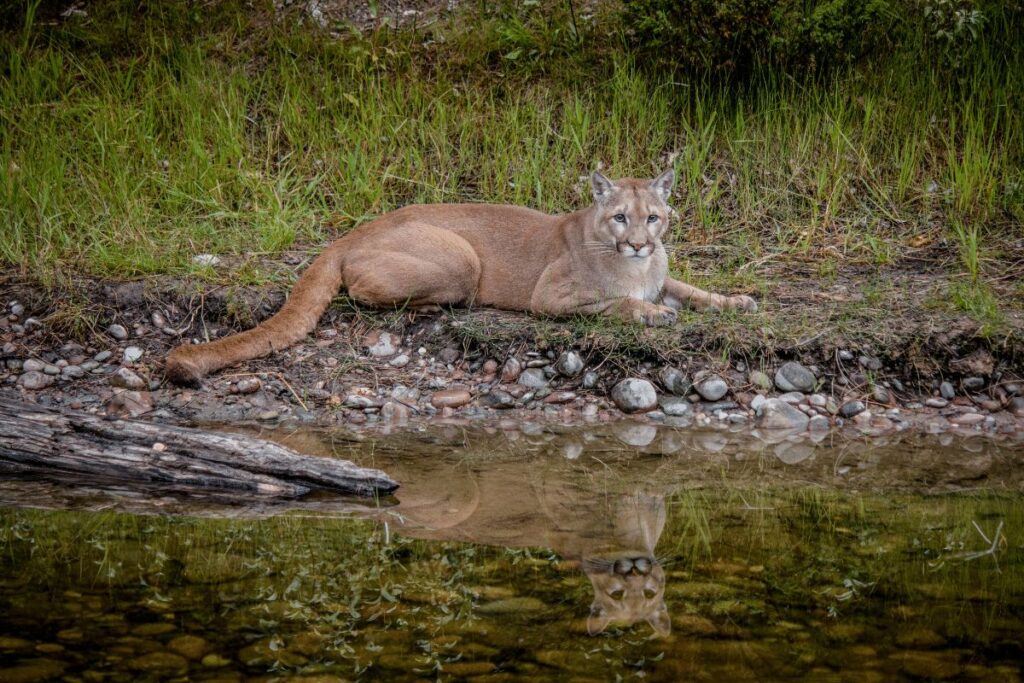
Cougar live in the canyon bottoms and lower slopes of foothills throughout the park, but they travel extensively as they search for food. They are primarily nocturnal but have also been known to be active during the day.
A single mountain lion’s territory may range up to several hundred square miles , so the best way to see one is to be in the right place at the right time.
While we were lucky to spot this animal while camping, it is always best to be cautious and use good judgment when recreating outdoors. Remember to never approach wildlife and enjoy them from a distance.
Mountain lions are very rarely seen within the park , as they tend to stay away from people and prefer more remote locations. Even if a sighting is reported, visitors are still advised not to approach the animal and to always use caution.
Bobcats
The first animal we saw while camping in Dixie National Forest was a bobcat. We were out hiking when we spotted it off in the distance. We watched it for a while as it roamed around, and then it disappeared into the brush.
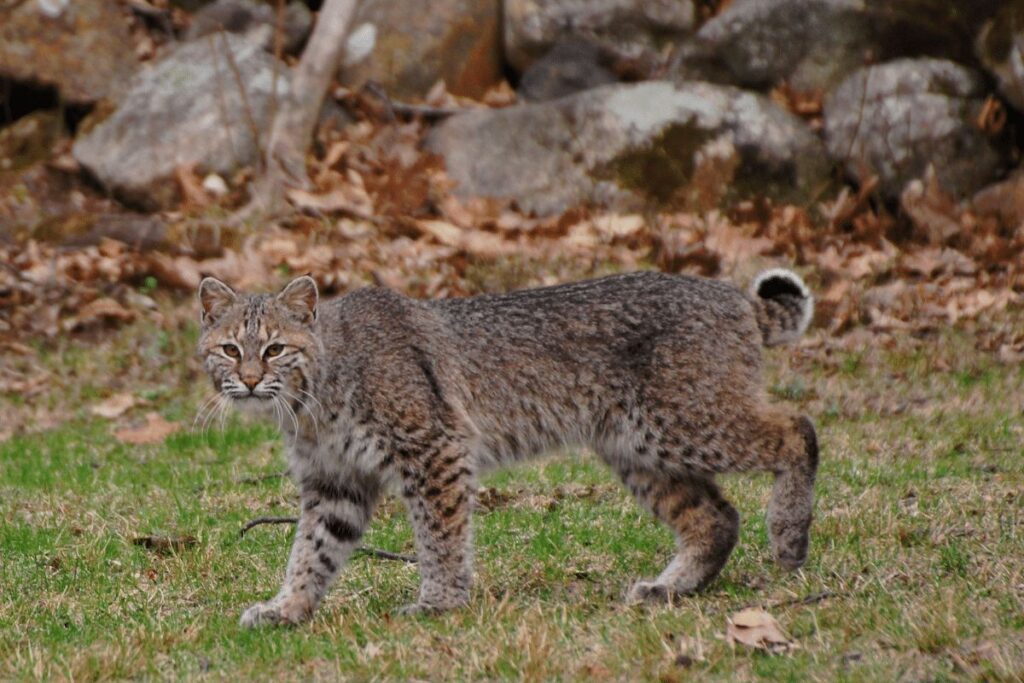
Bobcats are medium sized cats, roughly twice the size of a common house cat. They can be identified by their short ears and long legs, as well as their tufted tails. Bobcats usually live in woodlands and grasslands, although they have adapted to life in more urban settings.
They are omnivorous — which means they will eat anything from mice to birds to berries. They can be both diurnal and nocturnal, and typically hunt alone or in pairs depending on their prey.
Blue grouse
The blue grouse is a medium-sized bird that is found in North America. The male blue grouse has a blue-gray body with black wings and a white tail. The female blue grouse is brown with white spots on her wings.
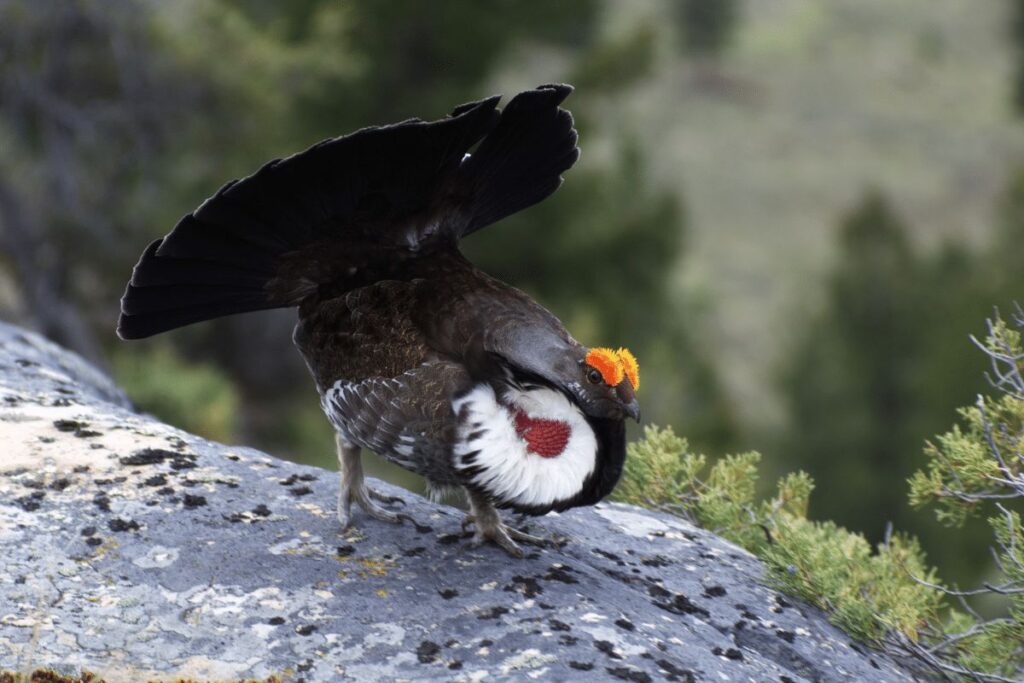
The blue grouse eat insects and berries.
The blue grouse are typically found in the mountain forests of western North America. During the winter months, they can be found in coniferous and deciduous forests. They prefer habitats with dense undergrowth and open meadows.
Blue grouse may be seen during their breeding season in June and July on mountain slopes, especially near cliffs and other rocky cover. The males have an elaborate courtship display that includes fanning of the tail feathers and loud gobbling sounds.
After mating, female blue grouse produce clutches of four to eight eggs which are incubated for about a month before hatching.
Golden eagle
Golden eagles are one of the most iconic animals of North America. They are large birds, with a wingspan of up to 7.5 feet, and they are easily recognizable by their dark brown plumage and golden head.
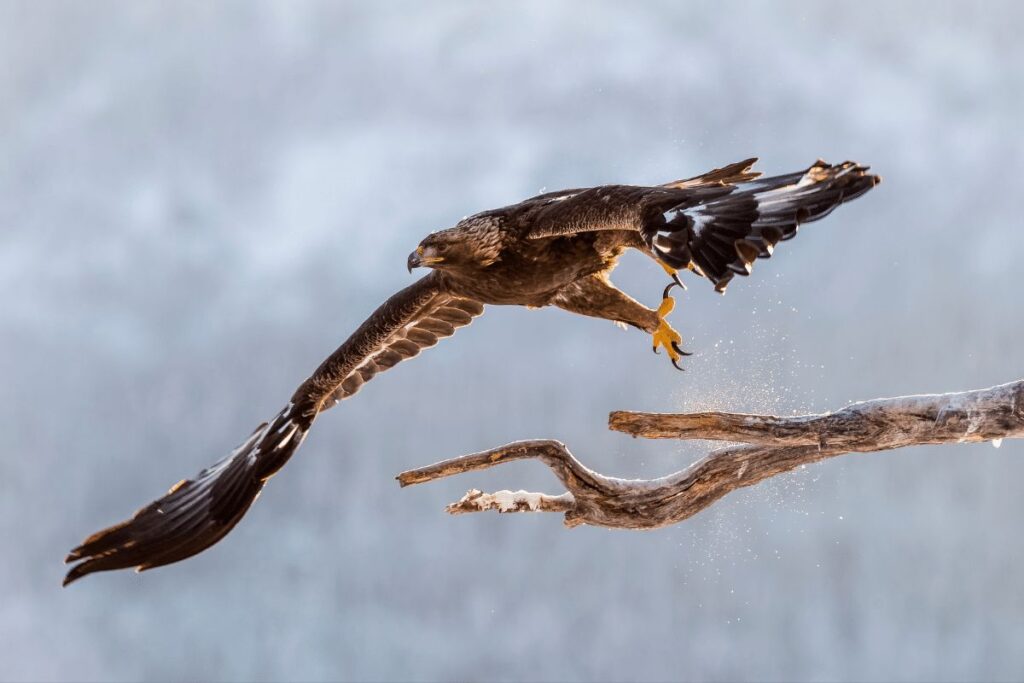
Golden eagles are found in many different habitats, but they prefer open areas with few trees, such as grasslands, prairies, and deserts.
In North America, golden eagles are most commonly found in the western United States and Canada. They have also been known to inhabit parts of Mexico and Central America.
Golden eagles typically mate for life, and they build their nests in areas with good vantage points, such as cliffs or trees.
Although golden eagles are not currently endangered, they have faced various threats over the years, including habitat loss and human persecution. Thanks to conservation efforts, however, their populations have stabilised in recent years.
Cottontail rabbit
The cottontail rabbit is a common sight in the Dixie National Forest. These small, brown rabbits are abundant in the forest and can often be seen running through the underbrush. Cottontail rabbits are not shy and will often approach campers for a quick snack.
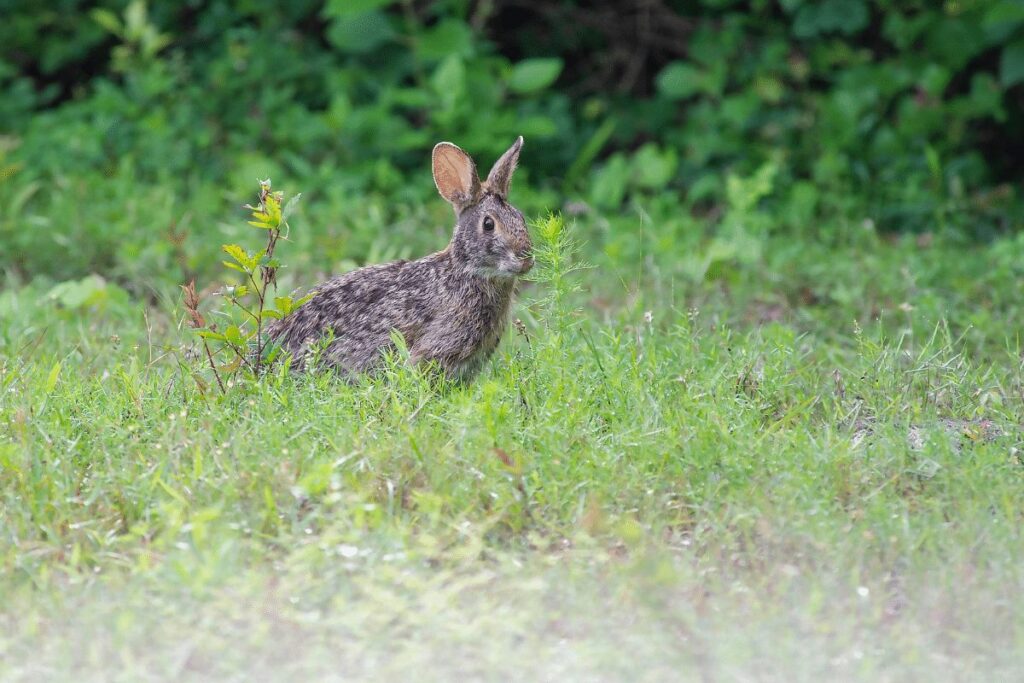
Be sure to keep an eye on your food and trash when camping in the Dixie National Forest, as cottontail rabbits are known to be attracted to these items.
The cottontail rabbit is a species of small, brown rabbit found in much of North America. They are usually about 10-14 inches long and can weigh up to 3 pounds. Their fur is often grayish brown with a white underside, giving them the appearance of having ‘cotton tails’.
Cottontail rabbits are herbivores, feeding mainly on grass, leaves and other vegetation. They will also eat fruits and berries when available. Cottontail rabbits are active during the day, mainly foraging for food in the early morning and late afternoon hours.
At night they will huddle in groups known as warrens or nests to keep warm and safe from predators.
Cottontail rabbits are an important part of their habitat’s ecosystem, providing food for predators like hawks and owls while keeping the undergrowth trimmed by munching on grasses and shrubs.
Wild turkey
While camping in Dixie National Forest, we were lucky enough to see a wild turkey! It was quite a sight to see the huge bird strutting around in the woods. We also saw other wildlife, including deer, squirrels, and even an elk!
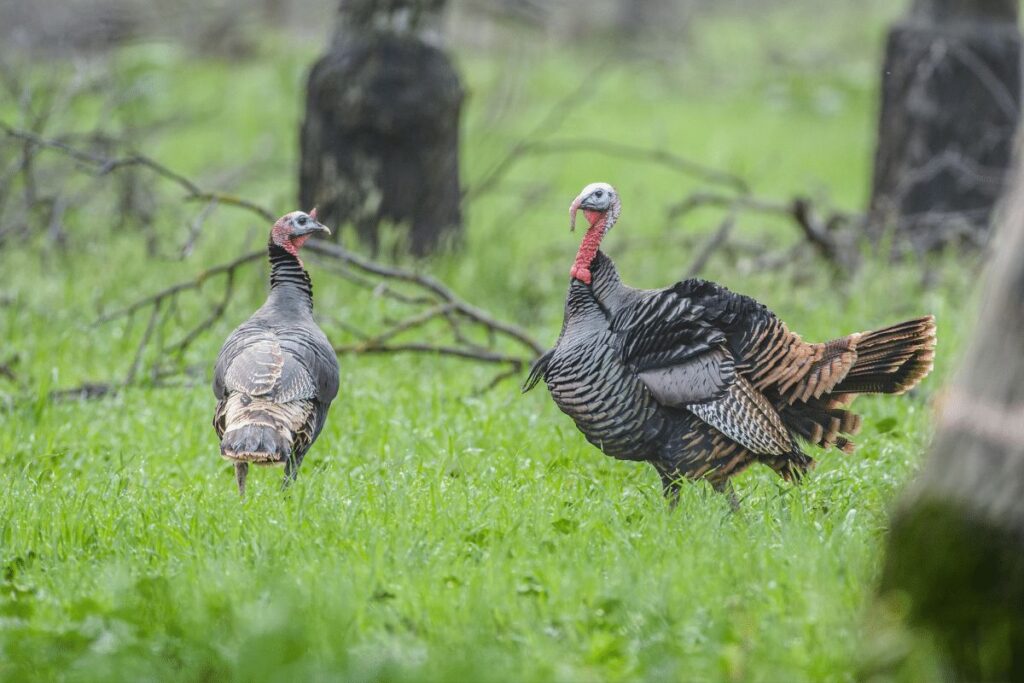
It was amazing to be up close and personal with such majestic creatures. The turkey was quite smart and managed to avoid us, no matter how close we got. We even heard it gobbling from the trees above us!
The experience was unforgettable and made us feel connected to nature. Being able to see a wild turkey out in the wild was a unique and wonderful experience.
Pronghorn Antelope
The pronghorn antelope is the fastest land animal in North America, capable of running at speeds up to 55 miles per hour! These fleet-footed creatures are a common sight in Dixie National Forest, where they can often be seen grazing on the grassy plains.
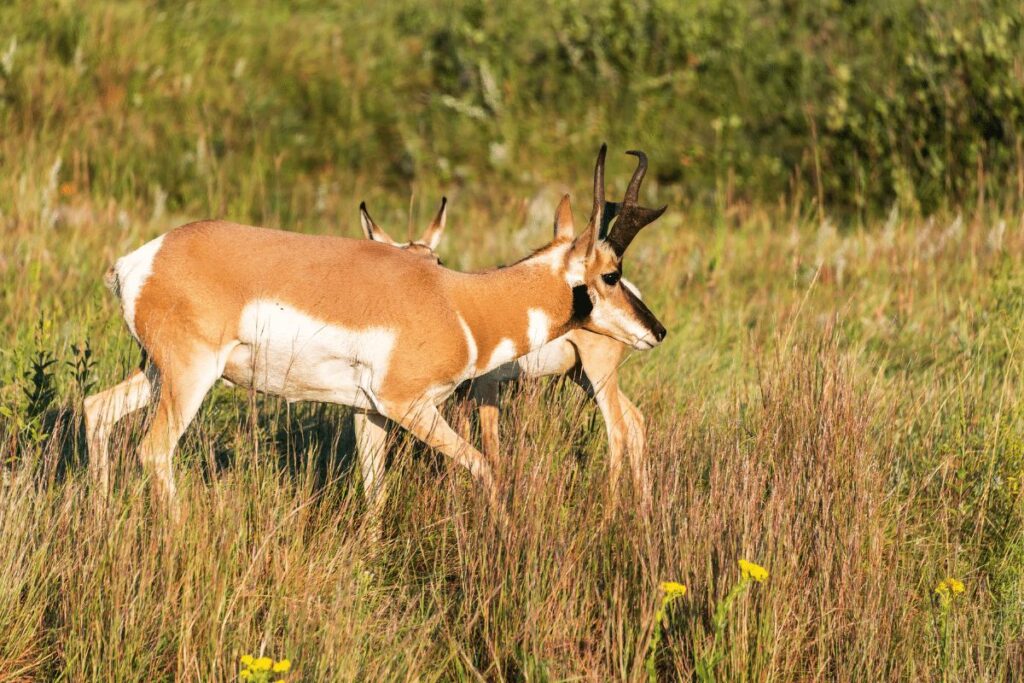
Although they look like deer, pronghorn are actually more closely related to giraffes and okapis. Male pronghorn sport distinctive horns that can reach up to 15 inches in length, while females have shorter, thinner horns.
Pronghorn are curious and intelligent animals, and watching them bound across the landscape is a truly magnificent sight.
Utah prairie dog
The Utah prairie dog (Cynomys parvidens) is a medium-sized rodent found in the western United States. The species is protected as a threatened species by the US Fish and Wildlife Service.
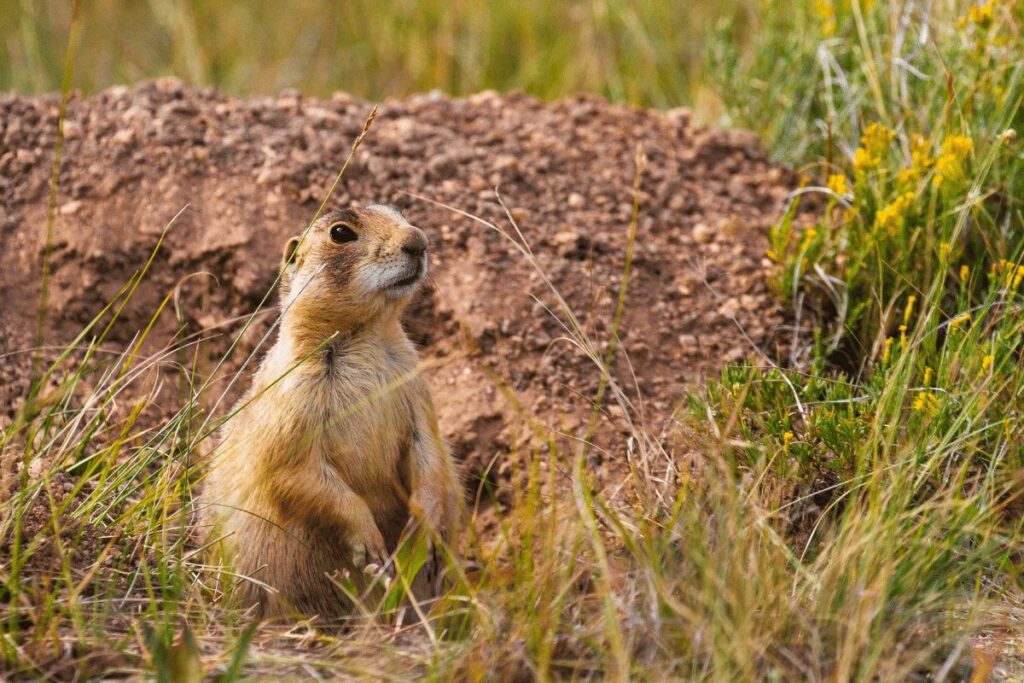
The Utah prairie dog is found in the Great Basin region of the western United States, with its northernmost populations in southern Idaho and its southernmost populations in southwestern Colorado. The majority of the population is located in central and eastern Utah.
The diet of the Utah prairie dog consists primarily of grasses and forbs, but they will also eat insects, reptiles, and carrion. These animals play an important role in their ecosystem as their digging creates homes for other animals and their grazing helps to control the growth of invasive plants.
The biggest threat to the Utah prairie dog is habitat loss due to human development. Other threats include disease, predation from non-native animals, persecution from humans, and extreme weather conditions.
Elk
Elk are one of the most popular animals to see while camping in Dixie National Forest. Typically, elk can be found grazing in meadows or browsing in forested areas. They are often seen near water sources such as lakes and rivers.
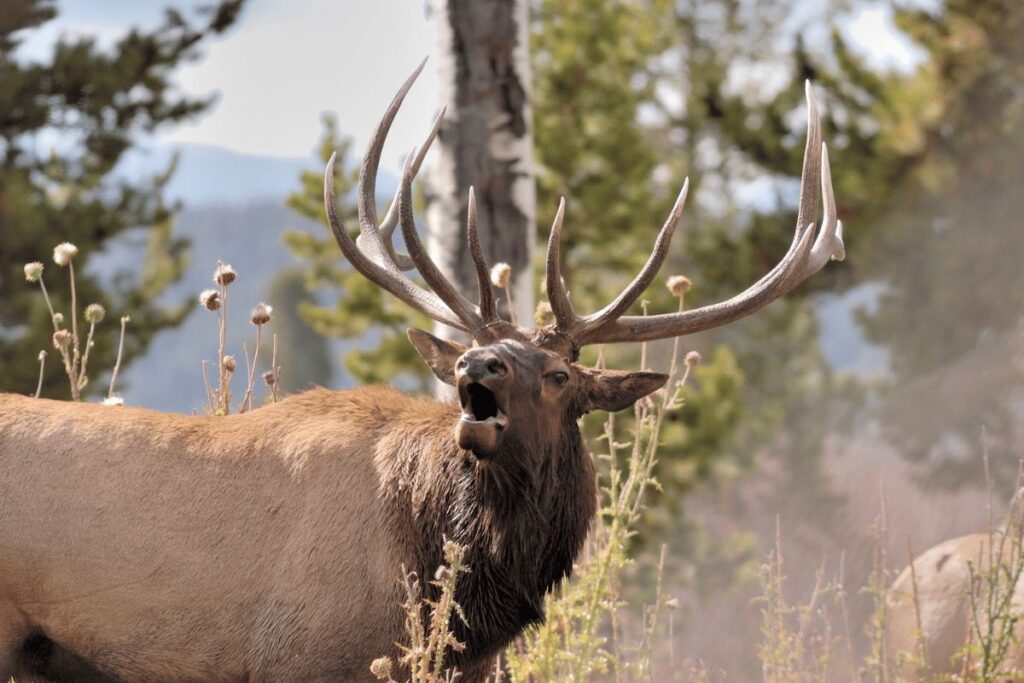
Elk are relatively ‘quiet’ compared to other wildlife and generally do not pose a threat to humans unless provoked. Although large in size, elk are delicate creatures and can easily be scared off by loud noises or sudden movements.
If you do see an elk while camping in Dixie National Forest, please respect their space and enjoy from a distance!
Additionally, hunting elk is allowed in certain areas with a valid hunting license. Make sure to check your local regulations before hunting and be aware of safety guidelines to ensure a successful outing!
Mule deer
Mule deer are a common sight in Dixie National Forest. These deer are slightly larger than their cousins, the white-tailed deer, and have longer ears. Mule deer are generally calm animals, but they can be startled easily.
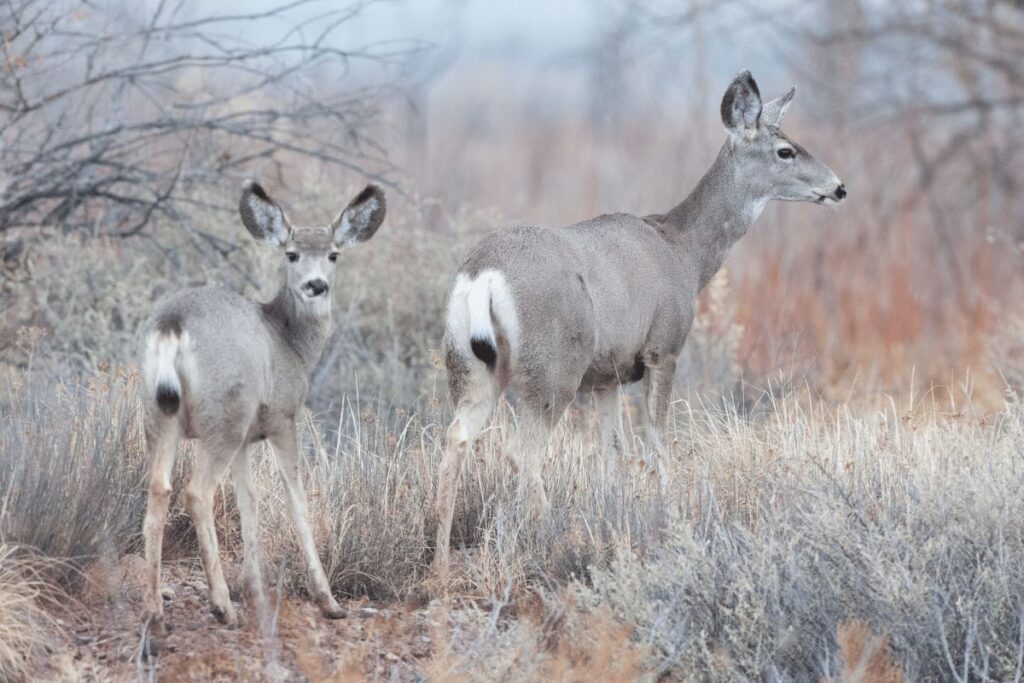
If you see a mule deer while camping in Dixie National forest, give them plenty of space and do not approach them.
Mule deer in Dixie National Forest range in size from 30-42 inches tall and weighs anywhere from 100-300 pounds. The males are typically larger than the females.
Mule deer inhabits diverse habitats throughout the forest including chaparral, woodlands, and desert shrub steppe.
They feed on a variety of browse such as herbs, shrubs and grasses. The type of food consumed depends on season and availability. Along with browsing, mule deer also graze on open meadows, riparian forests and mountain ranges.
Exploring the Ecosystems of Dixie National Forest
Dixie National Forest is home to a wide variety of ecosystems, each providing unique habitats for the abundant wildlife found within its boundaries. The forest’s diverse landscapes, including high desert, alpine forests, and meadows, support numerous species of animals, some of which are highlighted in this article.
By exploring the various ecosystems and trails in Dixie National Forest, visitors can enjoy close encounters with these fascinating creatures in their natural habitats.
High Desert Ecosystem
The high desert ecosystem in Dixie National Forest is characterized by its arid climate, sparse vegetation, and dramatic sandstone formations.
This environment is home to animals such as desert bighorn sheep, jackrabbits, and various reptiles, including the Great Basin rattlesnake and the desert horned lizard.
Some of the best trails to explore the high desert ecosystem include:
Red Canyon’s Arches Trail: This 0.7-mile trail takes you through unique sandstone formations and offers opportunities to spot desert wildlife.
Sand Bench Trail in Zion National Park: Located on the western edge of the forest, this 3.6-mile trail provides stunning views of the high desert landscape and the chance to encounter desert bighorn sheep.
Alpine Forest Ecosystem
At higher elevations, Dixie National Forest’s alpine forest ecosystem thrives, boasting lush coniferous forests, meandering streams, and pristine lakes.
This habitat provides shelter for animals such as black bears, mule deer, and elk, as well as numerous bird species like the Clark’s nutcracker and the mountain bluebird.
Recommended trails to explore the alpine forest ecosystem are:
The Virgin River Rim Trail: This 32-mile trail traverses through the alpine forests, offering excellent opportunities to spot wildlife and enjoy the tranquility of the forest.
Cascade Falls Trail: This 1.4-mile hike leads to a beautiful waterfall and provides the chance to see mule deer, elk, and a variety of bird species.
Meadows and Wetlands Ecosystem
The meadows and wetlands within Dixie National Forest serve as essential habitats for many species of birds, insects, and amphibians.
These areas are home to animals like the Great Basin spadefoot toad, the mountain yellow-legged frog, and various species of waterfowl.
Trails to explore the meadows and wetlands ecosystem include:
Navajo Lake Loop: This 11.5-mile trail circles the scenic Navajo Lake and offers access to lush meadows, marshy areas, and wetlands, perfect for birdwatching and amphibian encounters.
Swamp Canyon Trail in Bryce Canyon National Park: This 4.3-mile loop trail takes you through diverse terrain, including meadows and wetlands, where you can observe a variety of wildlife.
River and Riparian Ecosystem
The rivers and riparian areas of Dixie National Forest provide vital resources for many species.
The forest’s waterways support aquatic life such as the Bonneville cutthroat trout and create lush habitats for animals like beavers, river otters, and an array of bird species.
To explore the river and riparian ecosystems, consider the following trails:
Riverside Walk in Zion National Park: This 2.2-mile paved trail follows the Virgin River, offering excellent opportunities to spot riparian wildlife, including beavers, birds, and various amphibians.
Lower Calf Creek Falls Trail: This 5.8-mile round-trip hike leads to a stunning waterfall and follows Calf Creek, where you may spot beavers, river otters, and a variety of bird species.
By taking the time to explore these diverse ecosystems and trails in Dixie National Forest, visitors can gain a deeper appreciation for the rich array of wildlife that calls this remarkable area home.
These habitats are essential for the survival and well-being of the numerous species found within the forest’s boundaries.
Wildlife Viewing Tips and Etiquette
While exploring the various ecosystems of Dixie National Forest, it’s essential to follow proper wildlife viewing etiquette to ensure the safety and well-being of both the animals and visitors. Here are a few tips to keep in mind:
Keep a safe distance: Always maintain a respectful distance from wildlife, and avoid disturbing their natural behaviors. Use binoculars or a telephoto lens to observe animals up close without invading their space.
Stay on designated trails: Stick to established trails to minimize the impact on fragile ecosystems and reduce the risk of disturbing wildlife.
Be patient and quiet: Wildlife may be more likely to reveal themselves if you remain patient and quiet. Avoid loud noises and sudden movements that could scare animals away.
Leave No Trace: Follow Leave No Trace principles to protect the environment and preserve the natural habitats of the wildlife you’re observing.
By respecting the natural habitats and observing proper etiquette, you can help ensure that future generations can continue to enjoy the abundant wildlife found in Dixie National Forest.
Conclusion
Our camping trip in Dixie National Forest was a great success and filled with unexpected wildlife encounters. We saw pronghorn, deer, Blue grouse, Golden eagle, wild turkeys, eagles and even a mountain lion!
It was an incredible experience for us to observe these animals in their natural habitats and such an intimate connection with nature is something that can’t be bought or described.
We hope this article has inspired you to explore the great outdoors yourself and maybe you’ll be lucky enough to spot some of these beautiful creatures too!

